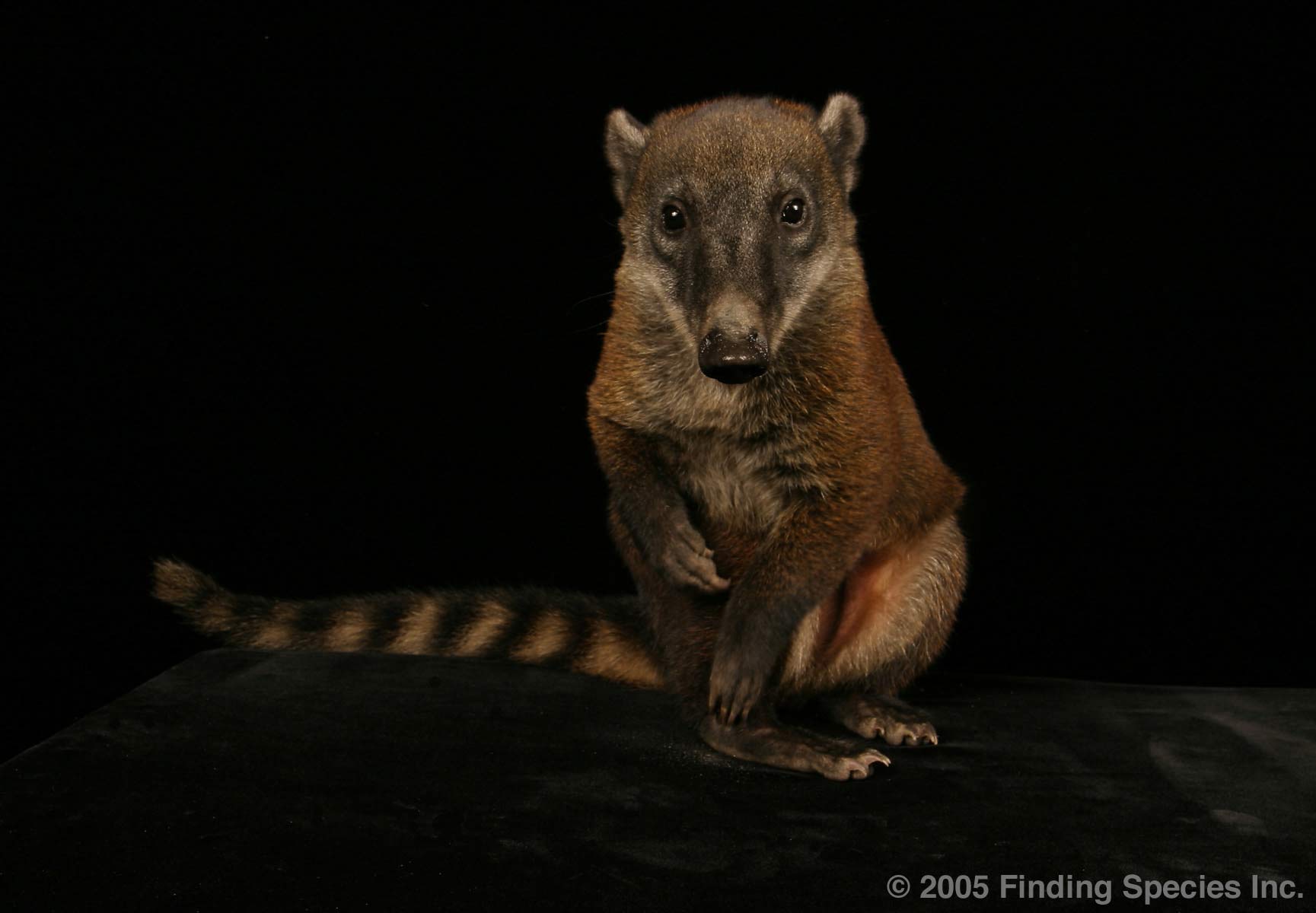South American Coati (Nasua nasua) Class: Mammalia Order: Carnivora Family: Procyonidae Genus: Nasua Species: nasua
IUCN Status: Not Listed
South American Coatis average 30 centimeters (about 1 foot) in height at their shoulders, and have a body length between 41 and 67 centimeters (16 and 26 inches). They also have long tails which add between 32 and 69 centimeters (12.5 and 27 inches) to their total length. Coatis weigh between 3 and 6 kilograms (6 and 13.5 pounds). This species has a thick and dull pelage that is dark reddish-brown to gray with a white under-belly. Their tails, which are used for balance, are dark brown with yellow stripes. Coatis have strong forelimbs and claws, which are used both for climbing and digging out food from under rotten logs.
Coatis are found in many different types of forest and scrubland ranging from Colombia and Venezuela to northern Argentina. They have been found at elevations up to 2500 meters (about 8000 feet). These diurnal creatures spend most of the day hunting for food on the ground then spend nights sleeping in trees, which is also where they mate and give birth. They will escape to the ground when threatened by running to the end of a tree branch and then jumping to a lower branch on the same tree. Their omnivorous diet consists primarily of fruits and a slew of different invertebrates. They have also been known to eat small mammals and carrion. They have been seen rummaging through human refuse and occasionally eat domestic chickens. Their primary predators are large cats and humans.
Female Coatis band together in groups of about 30 unrelated individuals and their young. These groups tend to be mobile. Males are solitary creatures and stay in the same area, except when they enter the female groups for mating. Females give birth to litters of 3 to 7 about 75 days after mating. Females sexually mature at about 2 years of age while males mature at 3 years. When in the wild, Coatis have a lifespan of about 7 to 8 years.
The main threats to this species are habitat encroachment and hunting. Additionally, there is a small demand for these creatures as pets. The mobile nature of the females makes this species particularly vulnerable to habitat fragmentation, which roads inevitably cause.
(http://animaldiversity.ummz.umich.edu/site/accounts/information/Nasua_nasua.html)
CLICK HERE FOR MORE EXTRAORDINARY
ANIMALS and PLANTS OF YASUNÍ,
THE MOST BIODIVERSE FOREST KNOWN ON EARTH
Yasuní Biodiversity Main Page
|

